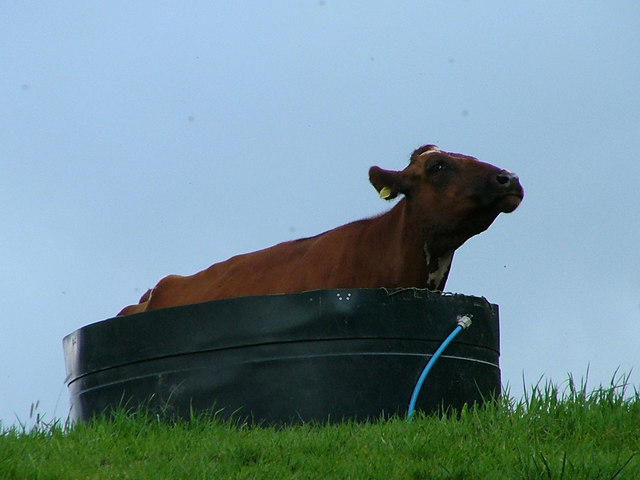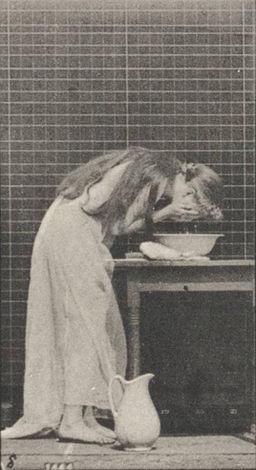
All we have to decide is what to do with the time that is given us.
J.R.R. Tolkien, The Fellowship of the Ring
The Surprising History of the Bath
The humble bath is so often overlooked. This useful piece of household equipment just sits there, mostly unused, sometimes even downgraded to a mere surface for shower run-off, and yet, the stories it could tell…
A good many people have entered this vale of tears via a bath, since the popularity of water births has increased. One assumes that a warm bath is less of a nasty shock for the new entrant, although presumably they need to be fished out fairly sharpish so they can start breathing in the normal way.
Even more people have departed this vale of tears in the bath. Even overlooking all those who were insufficiently careful with their electrical appliances while bathing.
As it says in Green Eggs and Hamlet,
“To sleep, to dream, now there’s the rub
I could drop a toaster in my tub.”
Winner of the gong for “Most Often Portrayed Dead in His Bath” is Jean-Paul Marat. Marat was assassinated in his tub, which should serve as a warning to all mankind about not giving audiences to young ladies while in the bath, especially when your wife warns you not to!
Agamemnon’s wife is said to have murdered him in the bath, although frankly, after sacrificing their daughter, staying away ten years, and then arriving home with his mistress and their children, he had it coming.
Three of the nine women who believed themselves to be married to George Joseph Smith – under a variety of different names – died in their baths shortly after making wills in his favour. The experienced diver who was helping the pathologist figure out howdunnit had a narrow escape too – it took the pathologist and a doctor half an hour to bring her round.
That’s births and deaths, what about marriages? I thought things probably hadn’t got that far (except perhaps in California) until I saw this. Which, now I look into it, appears to be from California. Where anything can and probably does happen.
The bath is also a great place for thinking. Archimedes figured out the whole water-displacement-volume thing in his tub time, and then invented a scientific method of stealing someone else’s bathwater: the Archimedes’ Screw. Centuries later, the great Agatha Christie dreamt up plots while lying in the bath and munching apples.
I myself am entirely pro-bath. I have lived in bath-having houses for the last twelve years, and while I have nothing against showers, there is nothing so luxuriously comforting as a hot bath when you come home soaked through on a cold rainy day.
This probably seems all the more luxurious to me as bathtubs did not feature largely in my childhood. When I was very little, we lived in a place where clean water was a rare and treasured thing.
We had a little bowl of water to soap up with, and another little bowl to rinse off. Admittedly, I had less surface area back then, but it is actually possible to get clean that way, and it is definitely water-efficient.
Fast-forward a few years and it was bucket showers, with the hot water heated in an enormous black kettle over an open fire. Baths were sometimes had in a large pink plastic bowl, with each member of the family using the bathwater in turn (while Dad read The Lord of the Rings outside the bathroom door). Proper old-school, that was.
I do try to be eco-friendly, which is why I have not made maximal use of the baths available to me for the last decade or so. But I recently realized that two showers take about as much water as one bath. (Seriously, try putting the plug in next time you shower. You will be surprised. Especially if you only have a shower stall…)
And then I made my great discovery. Using the water-displacement theories of that great bather of antiquity, Archimedes, one can enjoy a deeper bath without using more water. How, you ask? Add mass, ideally in the form of one’s dearly beloved. The volume of water thus displaced is experienced as greater depth.
Eureka.
Read It Again!
Thus goes up the cry from many a small child, with their insatiable desire for the same bedtime story to be told, over and over (and over) again.
But it’s not just little kiddies who do it. Scratch a reader and you will find a re-reader – but what is it we’re re-reading? And why?
The winner of the gold medal, blue ribbon and all-around first prize for re-reading (re-readiness?) is the Scriptures; unsurprising given the emphasis so many traditions put on reading, re-reading, memorizing and internalizing the words of God. As Jesus said, these are “foundational words, words to build a life on.” But, leaving the Scriptures aside, as the best-seller lists do (since the same book invariably tops the list), what are the most popular re-reads?
The comments on this post reminded me of the widespread passion for re-reading The Lord of the Rings – and not just re-reading it, but re-reading it again every year. That’s dedication, especially if you aren’t a fast reader.
Some people re-read other classic novels such as Jane Austen’s Pride and Prejudice or Tolstoy’s Anna Karenina, although I have yet to hear of anyone who repeatedly reads War and Peace – apart from Countess Tolstoy, who apparently recopied and edited it seven times. That’s going above and beyond the call of duty, it seems to me. Bearing thirteen children is one thing; reading War and Peace seven times is quite another.
Many people obsessively re-read C.S. Lewis’ The Chronicles of Narnia as children, and some continue the habit. I myself, as a child, re-read pretty much everything I could get my hands on, as I was a voracious reader with limited (re)sources. I even read our children’s encyclopaedia by the volume (Vol. 1, Article 1: Abbey, which may be connected to my subsequent interest in all things monastic).
More recently, I have noticed a pattern to my re-reading. When I am tired and want to relax, I read either an old favourite – Agatha Christie, Patricia Wentworth, Ngaio Marsh, Ellis Peters – or a book by an author with whom I am sufficiently familiar to be sure I will enjoy the book. And yes, this means that when I want to relax I almost without exception curl up with a mystery (although I did curl up with The Curse of Chalion the other day).
When I am not in need of book-induced relaxation – when I have more mental energy – I tend more toward the reading of non-fiction. Books about writing, books about whatever I have an interest in at the moment, books which happened to show up in an old box from someone’s grandmother. Reading entirely unfamiliar fiction doesn’t happen as often, unless the book is very compelling when I glance into it, because it doesn’t fit into either of my two settings: Relax or Absorb Information.
But once I’ve read a non-fiction book, I seldom feel the inclination to re-read it, and I think this reveals something about why people re-read – or at least why I re-read. I re-read books because there is something in them which I cannot fully obtain from one reading. If it’s non-fiction, it’s because I didn’t absorb enough of the information it contained the first time round.
With fiction, that doesn’t apply. I mean, look at the enormous popularity of P.G. Wodehouse’s novels. Read one, you’ve got a pretty good idea of them all, but that doesn’t stop people reading the rest and then re-reading them. Because the essence of the book isn’t in the facts of it, it’s in something altogether more evanescent. The style of the book, or perhaps its soul. You can’t break that down to its component parts to analyze why it works. The letter kills, but the spirit gives life, you could say.
Or, to steal a structure from Maya Angelou, people will forget what the book said, they’ll forget what the characters did, but they will never forget how the book made them feel. And that, I am convinced, is the secret of all re-reading. Reading the book produced in us a feeling – and with great books it’s a feeling no other book creates – and re-reading the book is the only way to feel that again. This is how reading prescriptions work; and also why we have fan-fiction.
What do you think? What books do you re-read, and why?








